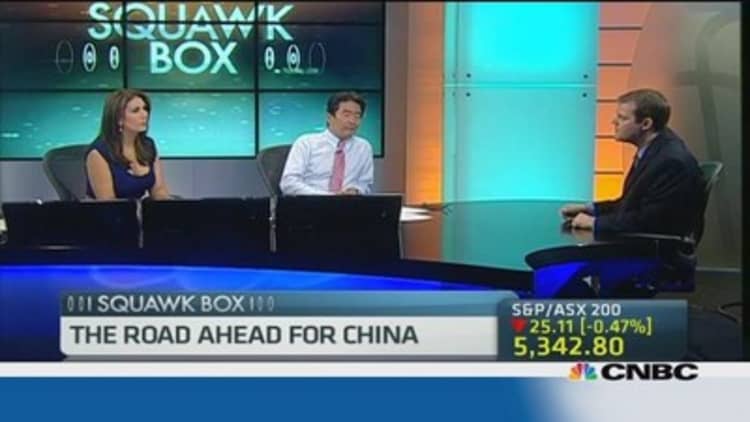Japan overhauled the world's biggest public pension fund on Tuesday, appointing new committee members, in a push toward Prime Minister Shinzo Abe's goal of a more aggressive investment strategy.
The government announced a reshuffle of the Investment Committee of the $1.26 trillion Government Pension Investment Fund (GPIF), in line with Abe's drive to have the fund make riskier investments and rely less on low-yielding government bonds.
Global financial markets are keenly watching GPIF's investment strategy as the fund, bigger than Mexico's economy, is a huge investor and a bellwether for other Japanese institutional investors.
The new committee will play a leading role when GPIF sets its new investment allocation targets over the coming months. Abe has promised GPIF reform as an element of his growth strategy, the "third arrow" in his policy, following aggressive monetary and fiscal stimulus.
Read MoreJapanis open for business: Shinzo Abe
Health Minister Norihisa Tamura, who appoints the GPIF Investment Committee members, shrank the panel to eight members from 10 as part of the overhaul. Two members retained their seats and one former member was brought back on.

The panel retains a balance of academics and economists, with one representative each from the main trade union federation—whose pensions are at stake—and the biggest business lobby.
But in a sign of Abe's more aggressive strategy, three of the now eight members sat on the advisory panel that spearheaded a change in the fund's strategy last year to achieve higher investment returns.
Read MoreJapan's export growth slows sharply in March
They are Sadayuki Horie, senior researcher at Nomura Research Institute; Isao Sugaya of the JTUC Research Institute for Advancement of Living Standards, a think tank of Japan's top labour federation; and Yasuhiro Yonezawa, a professor of Waseda University's graduate school of finance.
Yonezawa, an expert on pension matters, headed the GPIF Investment Committee from 2008-2010 and sits on several advisory panels of the Health Ministry's Pension Fund Bureau.
Read MoreWhy Japanese bonds look 'terrible': Kyle Bass
The advisory panel was led by Tokyo University Professor Takatoshi Ito who has been outspoken in calling for GPIF to undertake a more aggressive investment strategy.
Asset allocation
The fund, which was set up in 2001, conducted the biggest shakeup of its investment strategy last June when it revised its allocation targets to raise the core weighting for Japanese stocks and lower the weighting for domestic bonds in a bid to achieve higher returns.
GPIF now targets 12 percent of its investments in Japanese stocks, 60 percent in domestic bonds, 11 percent in foreign bonds, 12 percent in foreign stocks and 5 percent in short-term assets.
Read More Japan PM sends offering to Yasukuni Shrine
In February, GPIF agreed with Canada's Ontario Municipal Employees Retirement System and the Development Bank of Japan to invest in infrastructure projects through an investment trust fund.
GPIF recently began benchmarking some passive investments to the new JPX 400 index, which focuses on return on equity and corporate governance. The fund also uses more active investment strategies, in line with the Ito panel's recommendations.
GPIF has said it plans to expand its investment in foreign bonds to emerging markets bonds, foreign high-yield bonds and foreign inflation-linked bonds.
—By Reuters

